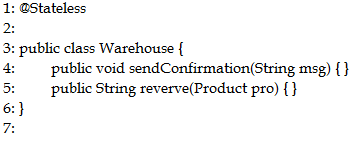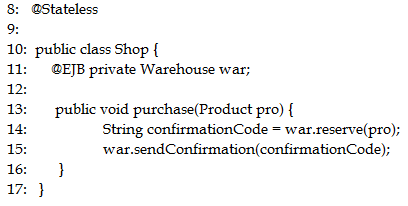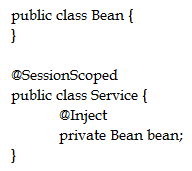Oracle 1z0-900 - Java EE 7 Application Developer
You face a supply request exception due to some reason. You realize that you need to make some changes to the Manage Supply Request Exceptions page.
Which action will you perform?
Give the code fragment:

And the code fragment:

The sendConfirmation() and reserve() methods should be executed in the same transactional context.
Which transaction attributes do you ensure this?
Your customer is a very large organization spanning across multiple countries. Their legal requirements, Human Resource Policies, and Functional Currencies for Ledger are different for each country. Your customer wants to maintain 10 different companies in the system.
Which combination meets this requirement?
You have been asked to implement internationalization in your JSF web application.
Where do you configure the supported locales?
While performing the task “Create Chart of Accounts, Ledger, Legal Entities, and Business Units in Spreadsheet Taskâ€, you mentioned that the legal entity country is the United States of America.
What will be the functional currency of the ledger you are defining?
Which three applications originate a buy request that is received by supply chain orchestration?
Which three statements are true for an expense destination transfers that does NOT require a receipt at destination inventory organization?
Given the JPQL code fragment:
Select pub.title, pub.author, pub.pages FROM Publisher pub
Which two clauses do you add to this JPQL query to retrieve only those books with between 500 and 750 total pages? (Choose two.)
A third-party service equipment is used for various purposes in a manufacturing facility and needs to be overhauled once a year. This equipment is charged based on its consumption without a project dependency.
At this point, it should be transferred out of the vendor’s warehouse for maintenance and then returned back in the future depending upon the requirement.
The material stock transfer should happen with an offline approval and with an account alias as a logical reference.
What is the ideal way to handle this process?
Given the code fragment:

Assuming this bean is used only in the code fragment above, how long will the injected Bean instance be available?



